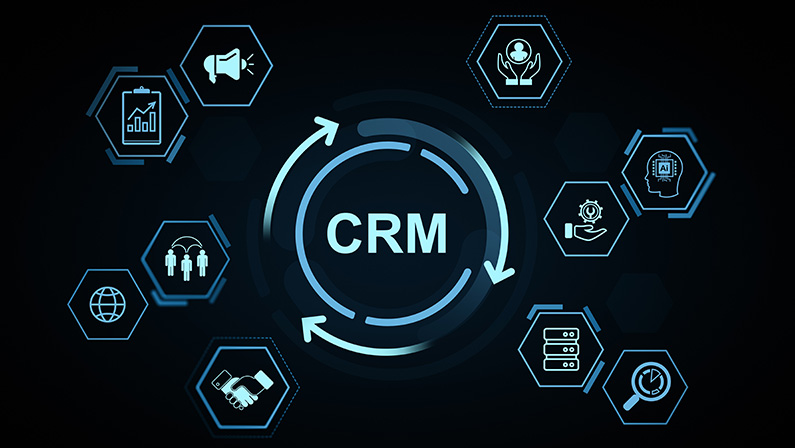
Customer relationship management (CRM) has evolved far beyond managing simple contact information. Data modeling plays a crucial role in this evolution by organizing, structuring, and interpreting vast amounts of customer data to drive strategic decisions.
By creating clear models of customer behaviors, preferences, and interactions, businesses can gain actionable insights to personalize services, optimize marketing campaigns, and build stronger, more profitable customer relationships.
What Is Data Modeling in CRM?
Data modeling in CRM is the process of creating structured frameworks that define how customer information is stored, connected, and accessed within a CRM system. Through designing an effective CRM data architecture, businesses can ensure that all customer data is organized logically, remains consistent across platforms, and is easily retrievable for analysis.
Customer data modeling enables companies to understand the relationships between different data points, supporting more informed decision-making and efficient CRM operations.
Why Data Modeling Matters in Modern CRM
Customer data modeling is vital for businesses that want to maximize the effectiveness of their CRM systems.
With a clear CRM data architecture, companies can turn raw data into valuable insights that drive better marketing, sales, and customer service outcomes.
Improves data organization and accessibility
Data modeling in CRM structures customer information for easy storage and retrieval. This organization ensures that teams have access to clean, accurate data whenever needed.
As a result, workflows become more efficient and decisions are based on reliable information.
Enables better customer segmentation
With a strong CRM data architecture, businesses can segment customers based on behaviors, preferences, and demographics.
Customer data modeling makes it easier to identify these groups and target them with tailored strategies. Effective segmentation leads to higher engagement and conversion rates.
Enhances personalization and targeting
Data modeling in CRM allows companies to understand customers on an individual level by organizing data in meaningful ways.
This understanding supports personalized messaging, offers, and services. Strong personalization builds trust, loyalty, and long-term customer relationships.
Supports predictive analytics and customer behavior forecasting
Customer data modeling lays the groundwork for predictive analytics within CRM systems. By analyzing organized historical data, businesses can forecast customer behaviors and preferences.
This enables proactive planning and strategic targeting that drive business growth.
Key Components of a CRM Data Model

A well-designed CRM data model is essential for data-driven customer relationship management, as it organizes various types of customer information to support efficient analysis and strategic decision-making.
Through leveraging data modeling techniques for CRM, businesses can create a robust structure that integrates data from multiple touchpoints, ensuring accuracy and accessibility for CRM analytics and day-to-day operations.
Customer profiles and contact data
Customer profiles and contact data form the foundation of any CRM system. This includes names, addresses, emails, phone numbers, and demographic details collected through data modeling techniques for CRM.
Accurate and updated profiles are crucial for effective communication and personalized outreach.
Purchase history and interaction records
Tracking purchase history and interaction records is key to understanding customer behavior over time. Data-driven customer relationship management relies on these records to identify buying patterns, preferences, and opportunities for upselling or cross-selling.
Organized data in this area also supports detailed CRM analytics for sales and marketing strategies.
Customer lifecycle stages
Mapping customer lifecycle stages within the CRM data model helps businesses track where each customer is in their journey, from lead to loyal client.
By using data modeling techniques for CRM, companies can align their marketing and sales efforts to nurture customers effectively at each stage. This strategic approach enhances retention and lifetime value.
Sales pipelines and campaign data
Sales pipelines and campaign data are essential components that connect marketing efforts to revenue outcomes. Including these in CRM data models allows teams to track deal progress, campaign performance, and conversion rates.
This integration is critical for data-driven customer relationship management, as it ensures seamless collaboration between sales and marketing.
Behavioral and engagement metrics
Behavioral and engagement metrics capture how customers interact with a business across channels. These metrics, when structured properly using data modeling techniques for CRM, provide insights into website visits, email interactions, social media engagement, and more.
CRM analytics then turn these insights into actionable strategies for improving customer experience and driving growth.
How Data Modeling Supports CRM Functions
Data modeling plays an integral role in modern CRM strategies by creating an organized CRM data structure that enhances key business functions.
Improving CRM with data modeling, companies can ensure their data is structured to support marketing, sales, and customer service goals efficiently. Using a customer segmentation data model alongside other structured data approaches ensures that insights are actionable and aligned with overall objectives.
Marketing Automation and Campaign Management
A robust CRM data structure enables effective marketing automation and campaign management. By integrating a customer segmentation data model, marketers can design targeted campaigns that reach the right audience with personalized messaging. Improving CRM with data modeling ensures campaigns are data-driven and optimized for engagement and conversion.
Sales Optimization and Forecasting
Data modeling supports sales optimization by organizing opportunities, leads, and customer data clearly within the CRM. This structured approach helps sales teams prioritize prospects and forecast revenue accurately.
Modern CRM strategies rely on data modeling to identify trends and make informed decisions that drive growth.
Customer Support and Retention
With a well-organized CRM data structure, customer support teams can access complete customer histories and interactions quickly. This enables faster, more personalized assistance that improves customer satisfaction and loyalty.
Improving CRM with data modeling empowers businesses to design retention strategies based on accurate behavioral insights.
Data Modeling Techniques for CRM

Applying the right data modeling techniques for CRM ensures that data is structured to support analysis, reporting, and customer-focused strategies. These techniques form the backbone of modern CRM strategies, enabling businesses to implement scalable solutions and unlock deeper insights into customer behaviors and needs.
Entity-relationship modeling (ER modeling)
Entity-relationship modeling defines the relationships between different data entities within a CRM data structure. It is a foundational technique for creating a customer segmentation data model by mapping out how customer profiles, transactions, and interactions connect.
This approach simplifies database design, improving CRM with data modeling efficiency.
Star schema for reporting and analytics
The star schema is widely used in CRM analytics for its simplicity and performance in reporting. It organizes data into fact and dimension tables, making it easier to run queries for campaign performance, sales metrics, and customer behaviors.
This technique supports modern CRM strategies by enabling fast and clear insights.
Dimensional modeling for data warehouses
Dimensional modeling structures CRM data for easy analysis in data warehouses. It organizes information into dimensions and facts, supporting complex queries across large datasets. This modeling technique is essential for building scalable CRM data structures that facilitate strategic decision-making.
Use of AI/ML with structured CRM data
Integrating AI and machine learning with structured CRM data unlocks predictive insights and automation capabilities.
When combined with a strong customer segmentation data model, AI/ML can forecast behaviors, recommend next-best actions, and personalize customer experiences at scale. This approach is central to improving CRM with data modeling in competitive markets.
Common Challenges in CRM Data Modeling
Despite its benefits, CRM data modeling comes with challenges that businesses must address to maximize their systems’ effectiveness. Understanding these obstacles helps in developing solutions that maintain data integrity and support modern CRM strategies.
Data silos and inconsistent formats
Data often exists in silos across departments, leading to inconsistent formats and integration issues. This fragmentation makes it difficult to create a unified CRM data structure for meaningful analysis.
Poor data quality and duplication
Duplicate entries and inaccurate data reduce the reliability of CRM analytics. Poor data quality hinders customer segmentation data models and affects decision-making across marketing and sales.
Scalability with growing datasets
As customer data grows, scaling the CRM data structure becomes challenging. Without proper planning, data modeling techniques for CRM may become inefficient, limiting future analytics capabilities.
Privacy and compliance concerns (e.g., GDPR, CCPA)
Ensuring compliance with data privacy laws like GDPR and CCPA is crucial in CRM data modeling. Mishandling sensitive customer information can lead to legal risks and loss of trust.
Best Practices for Effective CRM Data Modeling
To overcome challenges and maximize the benefits of CRM data modeling, companies should implement structured strategies aligned with business goals. These best practices ensure efficient operations and reliable data for modern CRM strategies.
- Start with clear business goals
Define specific objectives before building your CRM data structure. This ensures that data modeling techniques for CRM are aligned with measurable outcomes.
- Collaborate across departments (marketing, sales, IT)
Engage all departments to gather comprehensive data requirements and ensure consistency. Cross-functional collaboration results in a unified customer segmentation data model.
- Use data modeling tools and platforms
Leverage specialized data modeling tools to design, implement, and maintain CRM data structures efficiently. These platforms improve accuracy and save time in complex projects.
- Regularly audit and refine your data models
Continually audit your data models to identify gaps, inaccuracies, or scalability issues. Refinement ensures your CRM remains effective as customer data and business needs evolve.
Data Modeling for CRM Success

Data modeling is critical for improving CRM systems, enabling businesses to build scalable, organized, and insightful customer data architectures.
Applying these techniques and best practices allows companies to overcome common challenges and implement modern CRM strategies that drive growth.
With solutions like Leapify CRM and its predictive AI CRM capabilities, businesses can transform raw data into actionable insights, enhancing marketing, sales, and customer service for lasting success. Contact us today to get started.



